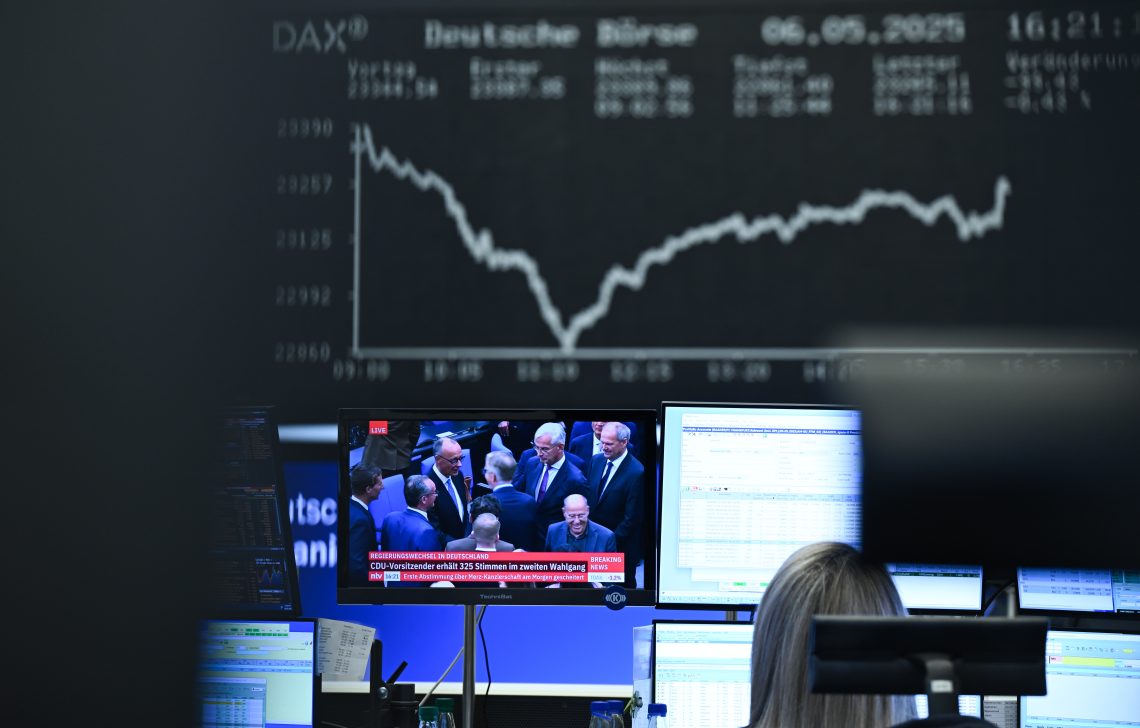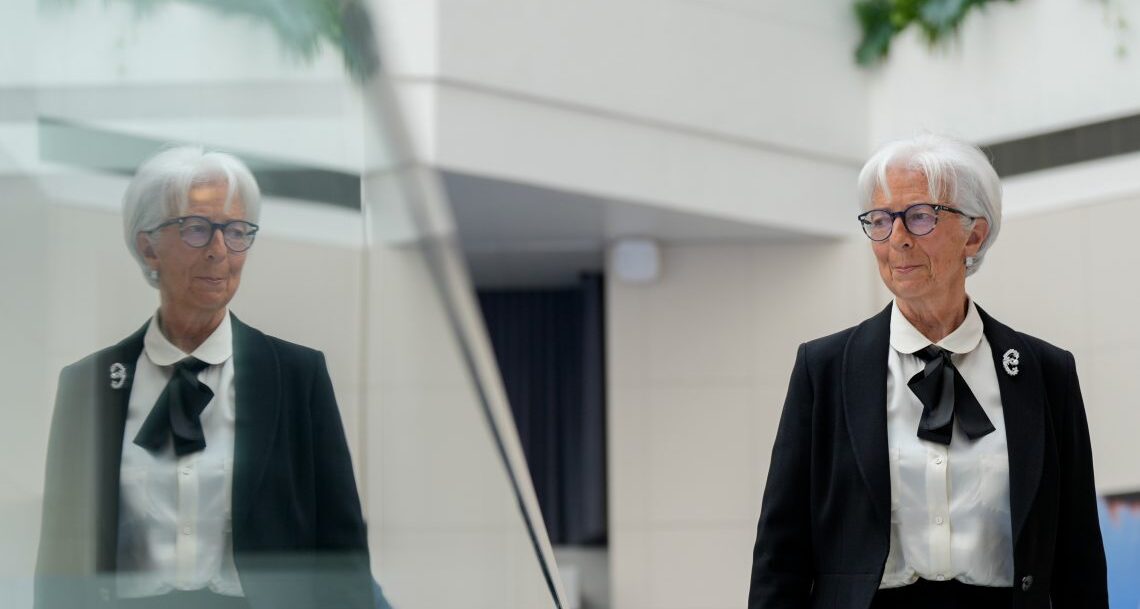Europe’s rearmament: New temptation
to issue Eurobonds
European nations have never been able to develop a credible joint military capability. In 1954, France torpedoed the attempt to establish the European Defense Community (outlined in the 1952 Treaty of Paris), and NATO has remained the only common defense umbrella. It is based on American resources and equipment plus American, French and British nuclear capabilities. All was going well while Western and Central Europe were not under threat.
That is no longer the case. Russia has repeatedly hinted that it would consider attacking NATO members Estonia and Latvia, and possibly also Poland and Finland, should the war in Ukraine escalate. The current United States administration has been cautiously calibrating its responses to Russia’s aggression, while complaints about Europe’s modest contribution to NATO’s budget keep coming from different quarters in Washington. At the same time, presidential candidate Donald Trump has dropped hints that the U.S. could leave NATO and let the Europeans fend for themselves.
Unavoidable military expense
The reaction in Europe to the combined pressures of a war on its doorstep and threatened withdrawal of U.S. military support has been mixed. Not surprisingly, European Union member states on the bloc’s eastern flank have taken the Russian threat seriously and responded with sharply increased outlays for defense. In its report for 2022, the European Defence Agency (EDA) points out the EU members’ “record spending” on defense of 240 billion euros, emphasizing that it marked the “eighth year of consecutive growth.” However, eight years ago the expenditure was unwisely low, as shown in the graph below, and the overall picture has been changing rather slowly.
Facts & figures
At the end of the Cold War in late 1991, average military expenditure in Europe was at 2.4 percent of gross domestic product (GDP). By 2015, it had dropped to 1.3 percent before rising to a modest 1.6 percent in 2022 and 2023.
Meanwhile, the Russian Federation was spending 4.1 percent of its GDP in 2022 and plans to push it further to 7.1 percent in 2024.
Facts & figures
In other words, by the end of 2024, defense spending will be about $320 billion in the whole of the EU versus the estimated $350-$380 billion in Russia. The figure for the U.S. is about $840 billion.
As the EU’s economy is much stronger than Russia’s, Europeans do not need to make intolerable sacrifices to increase their military expenditures and enhance deterrence. But one may wonder if the Europeans hope to merely sit tight and wait for Russia’s next move. In fact, staying put is hardly an option. The cost of EU defense will likely rise and stabilize at above 2 percent of its GDP – even if tensions ease. If the war in Ukraine drags on and direct NATO intervention becomes likely, the spending will rise further.
A rise in taxation is the most troublesome and painful among the instruments available, at least in the short run: the axe would need to drop heavily on the lower income and wealth classes.
The circumstances require more spending on the military. So, how can governments fund it? Three options are possible: raising taxes, accumulating more national debt or issuing joint EU securities.
Europe’s three painful options
Monetizing has been a frequent tool for financing wars. In essence, it occurs when the central bank prints new money and delivers it to the government, which then uses it to buy equipment and pay the military. Inevitably, since it results in civilian production falling and the money in circulation increasing, the outcome is a drop in living standards, a rise of inflation and, possibly, a burst of social unrest as high inflation leads to shifts in income distribution and redistribution.
A rise in taxation is the most troublesome and painful among the instruments available, at least in the short run. Disputes would ensue on whether it should be a national or an EU tax and who decides how the revenues are spent. That could lead to tensions across the alliance. Moreover, taxing the rich would not suffice since there are not enough high-income well-to-do taxpayers; the axe would need to drop heavily on on those with lower incomes. It follows that the resolve to bear the financial burden in those countries not immediately at risk of occupation by an invading army would weaken, and the temptation to leave Eastern Europe to its fate would intensify.
Considering the above, the most popular idea in Europe’s capitals is to run up more debt. For example, at the February 2024 Munich Security Conference, Estonian Prime Minister Kaja Kallas proposed creating a special fund with European Central Bank-issued Eurobonds for 100 billion euros to finance the Ukrainian army and accelerate European rearmament. The idea had support from President Emmanuel Macron of France and from European Council President Charles Michel.
The politicians’ preference for the Eurobond
Debt makes good political sense for Brussels. Since the outstanding public debt of EU member countries currently amounts to about 14 trillion euros, the Michel and Kallas proposal involves just a 0.7 percent rise in the public indebtedness of the bloc. The financial markets could easily absorb this – especially if the authorities refrain from dubbing this instrument a “war bond” and instead pretend they are using the proceeds to meet benign civilian needs, such as education or infrastructure development in member countries. At the same time, member states would transfer equivalent resources to the European defense budget. Under this scheme, Brussels could claim it is enhancing the common good while the national authorities could justify the transfers with patriotic narratives.
However, introducing Eurobonds (bonds issued by the ECB as a form of common eurozone debt, not not be confused with a eurobond more generally, meaning international bonds denominated in foreign currencies), has been a highly contested topic among the member states. The idea is opposed mainly by Germany and the “frugal” Nordic countries.
Financing emergency military needs with debt also creates strictly economic issues. One regards the identity of the lender.
The EU should consider additional military expenditures of at least 1 trillion euros during this decade.
If the borrower (national treasuries or the EU authority) sells the bonds on the financial market, financial investors transfer money to the borrower, who then spends it on military needs. In other words, either investors increase their savings (for an amount equal to the bonds purchased) and reduce their consumption by the same amount, or they keep their total savings constant and cut the resources for financing non-military investments and future growth. In either case, there would be no need to increase the money supply, and inflationary pressures would be contained.
Size matters, too. Debt financing is indeed reasonable if the expenditures are large, concentrated in a limited period, generate benefits over several years and repayment is distributed over five to 10 years. Of course, the risk of the borrower’s default will increase. Subscribers would have reason to worry, but taxpayers could spread their burden (repayment) further over time.
Under current circumstances, 100 billion euros will not suffice if the crisis in Eastern Europe persists. The EU should consider additional military expenditures of at least 1 trillion euros during this decade. The sooner it makes an explicit commitment, the stronger its credibility will be.
In other words, when debt becomes so large, debt servicing makes debt financing increasingly similar to tax financing, except for the risk premium.
In fact, choosing a debt strategy often comes close to suggesting that lenders may not be paid back in full or will be paid in worthless euros. If so, the burden on the taxpayers would become lighter as the euro weakens (debt is monetized) or vanish the moment the government defaults.
Scenarios
The EU’s commitment to defense could wreak havoc on some countries’ public finances. Hence, political packaging can play a significant role in defining two different scenarios – depending on the role of the ECB.
From Brussels’ perspective, the urgency of rearming could present an opportunity. Similar to the pandemic-related expenditure in 2020, it could serve as an argument for utilizing Eurobonds to finance pressing “emergencies” – such as climate change. The repayment of these bonds could justify certain forms of fiscal centralization, a goal long sought by the union’s bureaucracy.
Scenario 1, nearly certain: Brussels issues Eurobonds
The debt instrument will be purchased by financial investors and paid back via higher future taxes – possibly levied by Brussels. As with any war bond, the possibility of partial repudiation (the borrower is unable or unwilling to honor the contract) is enhanced, which necessitates offering investors a higher annual interest paid on the bond (coupon).
Scenario 2, quite likely: The ECB buys Eurobonds
Alternatively, the central bank purchases the Eurobonds and prints new money each time a new batch is issued. The Eurobond may also be sold on the market but is guaranteed by the ECB. The central bank will honor the guarantee (and print new money) when reimbursement is due. In other words, Eurobonds will be monetized.
In conclusion, Brussels is likely to endeavor to finance rearmament through euro debt backed by Frankfurt and repaid through future euro taxes. While national governments will express some nominal opposition, it is unlikely to be substantial. Ultimately, Europeans may find themselves grappling with increased centralization, heavier taxation and potentially higher inflation as the result of these financial decisions.
This report was originally published here: https://www.gisreportsonline.com/r/europes-rearmament-eurobonds-taxes-ecb/
































